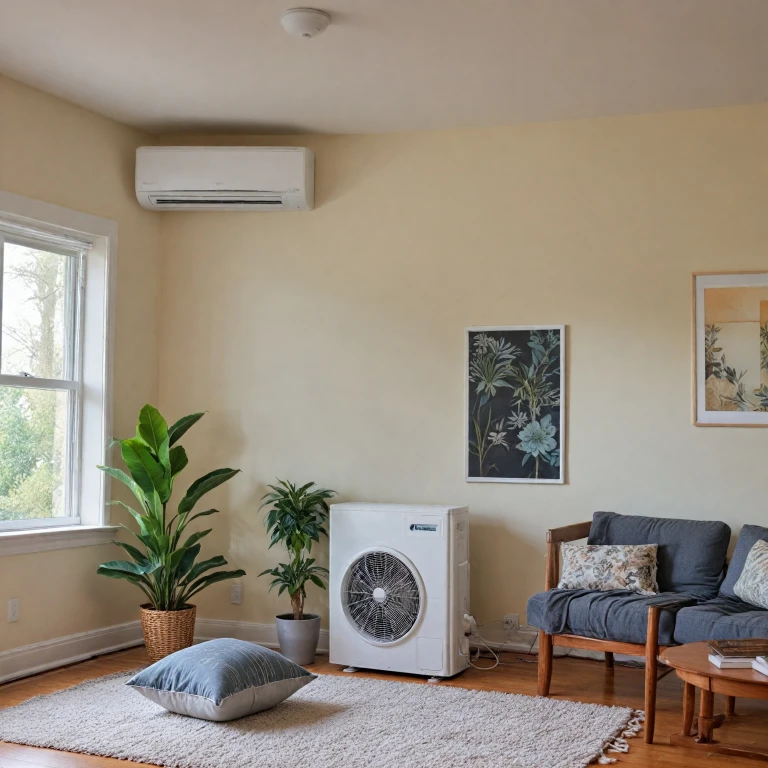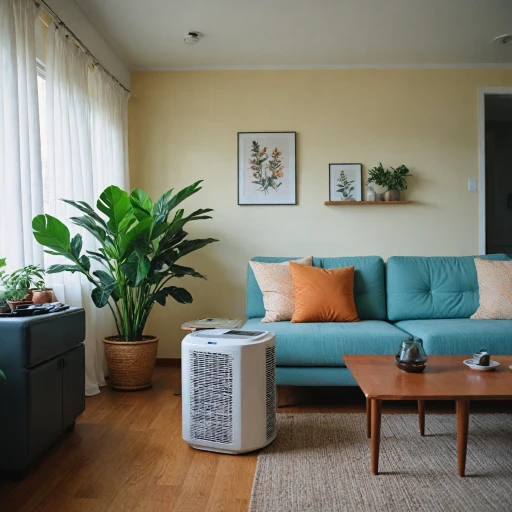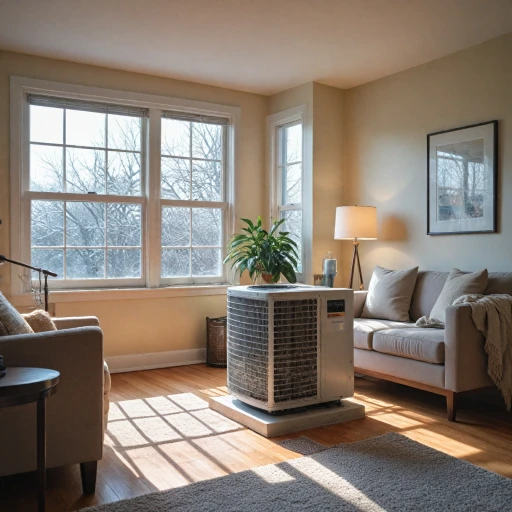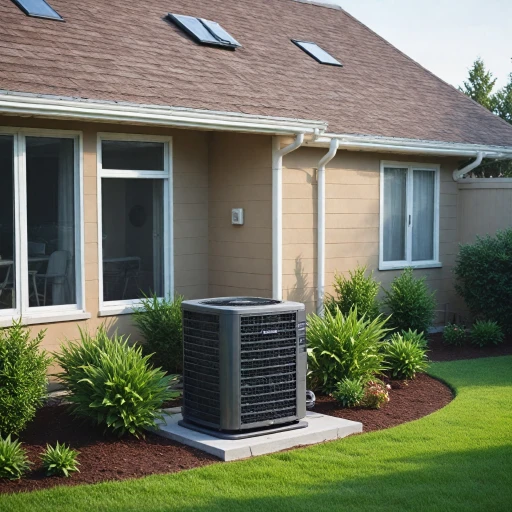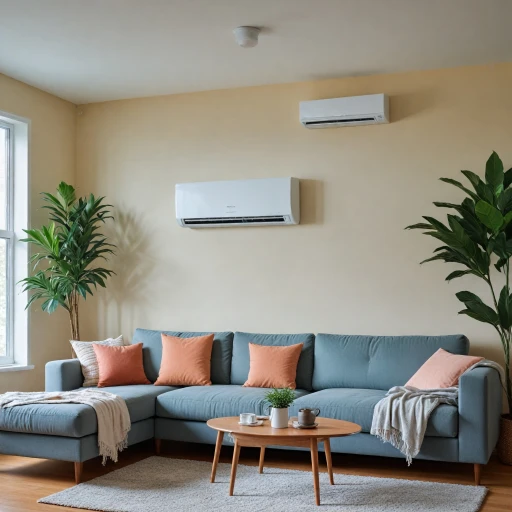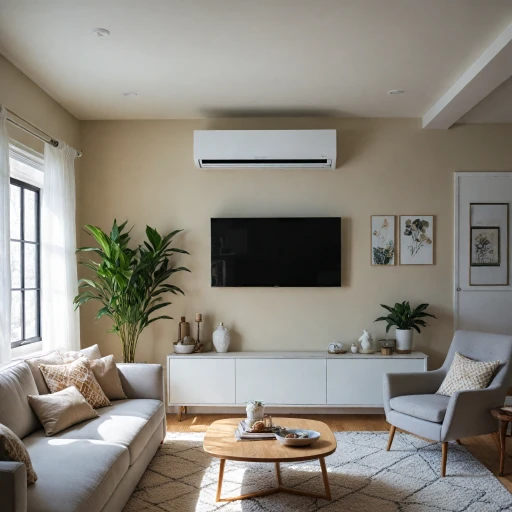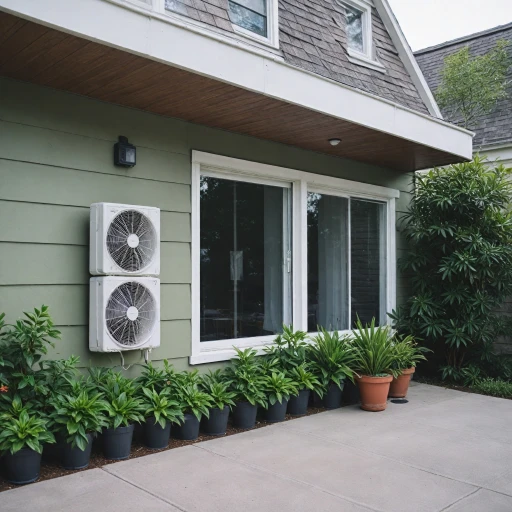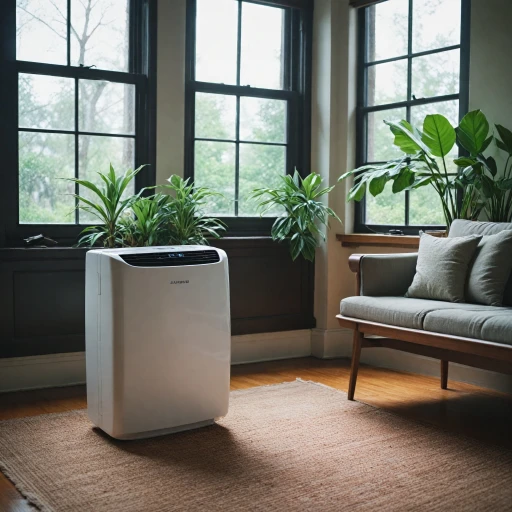
What Are Mini Split Air Conditioning Systems?
Deciphering the Basics of Ductless Mini Splits
When exploring options for cooling your space, ductless mini split air conditioning systems present an innovative and flexible alternative to traditional HVAC setups. These systems provide both cooling and heating, efficiently serving single or multiple zones within your home or office. A key component of these systems is their division between an indoor unit and an outdoor unit, which provides a split system design that supports better temperature control. Mini splits are characterized by their adaptability and compact design, often being wall-mounted within the designated indoor space. They function by utilizing a heat pump system, which can effectively transfer heat energy inside or outside your space, providing the desired indoor climate. Importantly, mini splits deliver remarkable energy efficiency, which is expressed in terms of Seasonal Energy Efficiency Ratio (SEER). Higher SEER ratings indicate greater efficiency, leading to reduced energy costs over time. Ductless systems like the mini splits operate without ductwork, which not only simplifies installation but also reduces energy loss commonly associated with ducts in conventional systems. In climates where both cooling and heating are essential, the integration of inverter technology allows mini splits to adjust the compressor speed dynamically, maintaining the required temperature efficiently. A variety of mini split units come with Energy Star certification, ensuring you can rely on their performance for long-term savings and environmental benefits. What's more, ductless mini splits often come with the advantage of free shipping, making them a practical choice for many homeowners. For a deeper understanding of these innovative air conditioning solutions, consider visiting understanding-the-benefits-of-ductless-ac-systems. This resource dives into the specific benefits that can further inform your decision-making process.Benefits of Mini Split Systems
Advantages of Ductless Cooling Solutions
When it comes to the benefits of mini split air conditioning systems, their ductless design is a significant advantage. Unlike traditional central air systems requiring extensive ductwork installation, mini splits are much easier to set up and maintain. This feature can notably reduce installation costs and time.- Energy Efficiency: Mini splits offer impressive energy savings. The absence of ducts means there is minimal heat loss, ensuring that energy is utilized efficiently. Systems are often equipped with an inverter, allowing variable speed operation to maintain optimal temperatures without unnecessary energy expenditure.
- Zone Control: One of the standout features of mini split systems is their ability to enable zone-specific conditioning. This means you can adjust temperatures in individual rooms or zones, providing personalized comfort while avoiding energy wastage. It’s particularly beneficial in spaces with varying cooling or heating requirements.
- Compact and Discreet: These systems are composed of two main components, an indoor unit and an outdoor unit, connected by refrigerant lines. The indoor part is typically wall mounted and unobtrusive. Homeowners appreciate the minimal space these components occupy and their aesthetic integration into modern interiors.
- Heating Capabilities: Mini split systems aren’t just about cooling; many models double as heat pumps, making them versatile for year-round use. This dual functionality eliminates the need for separate heating systems.
- Installation Flexibility: Unlike traditional AC systems that can be restricted by pre-existing ducts, mini splits offer greater flexibility in where units can be placed, including difficult-to-cool areas.
Installation Process of Mini Split Systems
The Process of Installing a Mini Split Air Conditioning System
The installation of a mini split system is a meticulous process that involves several key steps, ensuring optimal performance and efficiency. Unlike traditional HVAC systems, mini splits require careful planning and precision. First, it's important to determine the best location for both the indoor and outdoor units. The indoor unit, which is wall mounted, should be strategically positioned to facilitate efficient air distribution within the room. Ideally, it should be placed in a location that minimizes obstructions and allows for an unobstructed flow of air. The outdoor unit, responsible for housing the compressor and heat exchanger, should be positioned in a location that is easily accessible yet away from direct exposure to elements that could affect its performance. A crucial part of the installation process is drilling a hole through the wall to connect the indoor and outdoor units with copper tubing and electrical wiring. This hole needs to be carefully measured and sealed to avoid energy loss and ensure the aesthetic integrity of the property. The system's electrical connection is another critical component. It's essential to connect the unit's wiring precisely to its dedicated electrical circuit to prevent any power overloads. An experienced technician usually performs this job, ensuring compliance with local codes and regulations. Finally, the system undergoes a thorough testing phase to ensure it operates at its optimal efficiency and has a correct refrigerant charge for maximum cooling and heating capabilities. It's important to note that a properly installed mini split system can significantly contribute to energy efficiency and provide an effective solution for temperature regulation in your desired zones. With careful attention during the installation process, homeowners can enjoy the benefits of a mini split system, including energy efficiency and comfort. For those interested in diving deeper into the pros and cons of these systems, click expand here.Maintenance Tips for Mini Split Systems
Keeping Your Mini Split System in Top Shape
Maintaining a mini split air conditioning system is essential for ensuring its longevity and efficiency. Proper care helps to maintain the energy efficiency and BTU output of your unit, prolonging the system's lifespan and helping you save on energy bills. Below are some tips to keep your ductless mini split system running smoothly throughout the seasons.- Regularly Clean the Filters: Removing dust and debris from the indoor unit’s filters is crucial. A clogged filter can impede airflow and decrease air quality while impacting the efficiency of the unit. Depending on the usage, clean the filters every two to four weeks.
- Check the Outdoor Unit: Ensure that the outdoor unit is free of any obstructions like leaves, dirt, or snow. Allowing adequate airflow around the unit maximizes its heating and cooling capabilities.
- Inspect the Condensate Drain: Blockages in the condensate drain can lead to water leaks and even damage the unit. Regularly check and clear any clogs to ensure proper drainage.
- Routine Professional Servicing: Having a professional technician inspect your system annually can identify potential issues early. They can check the refrigerant levels, inspect the compressor and heat pump, and verify the overall functionality of the system.
- Monitor for Unusual Noises or Odors: If your ductless mini split system starts making unusual sounds or emitting strange odors, it might signal a need for maintenance. Address these issues promptly to avoid further damage.
- Utilize the Programmable Thermostat: Optimize the energy efficiency of your split heat and ac system by using the programmable thermostat to schedule heating and cooling when needed.
Comparing Mini Split Systems with Portable Air Conditioners
Distinguishing Between Mini Splits and Portable Units
When considering cooling and heating options for your space, it's crucial to weigh the benefits and drawbacks of both mini split systems and portable air conditioners. Mini split systems are highly efficient and versatile, offering both heating and cooling capabilities through a ductless setup. They use an outdoor unit connected to one or more indoor units, allowing for multi-zone control. This customization can significantly reduce energy consumption and is ideal for tailored climate management across different room zones. Mini splits are often recognized for their energy efficiency, with high SEER ratings making them an energy star choice. On the other hand, portable air conditioners are known for their mobility. They are easy to deploy in different parts of your home due to their compact design. Unlike mini splits, portable units do not require permanent installation, making them a flexible option for temporary cooling needs or spaces where traditional systems are impractical. However, portable systems might fall short in energy efficiency and overall cooling power compared to mini split configurations. Both systems can include heat pump capabilities, although the mini split often offers a more robust and efficient heating performance. Additionally, mini splits leverage inverter technology, which optimizes energy usage by adjusting the compressor's speed according to the temperature needs, further enhancing their efficiency. For individuals focused on minimal installation hassle and cost-effective shipping, portable units might be enticing. However, for long-term solutions with superior climate control across larger spaces or multiple zones, mini split systems stand out as a preferred option. Remember that while portable air conditioners can serve immediate cooling needs, mini splits provide a comprehensive temperature management solution with their advanced technology and efficient operation.Choosing the Right Mini Split System for Your Space
Factors to Consider When Selecting a Mini Split System
Choosing the right mini split air conditioning system for your space involves several considerations. Understanding these factors can help ensure you select a unit that meets your cooling and heating needs efficiently.
Assessing Your Space and Needs
First, evaluate the size of the area you want to cool or heat. Mini splits are available in various BTU ratings, which indicate the system's capacity. A higher BTU rating means the unit can handle a larger space. However, selecting a system with too high a BTU rating for a small area can lead to inefficiencies and increased energy costs.
Energy Efficiency Ratings
Consider the SEER (Seasonal Energy Efficiency Ratio) rating of the mini split system. A higher SEER rating signifies better energy efficiency, which can result in lower utility bills. Look for systems with an Energy Star certification to ensure optimal energy savings.
Single Zone vs. Multi-Zone Systems
Decide whether you need a single zone or a multi-zone system. Single zone systems are ideal for cooling or heating one specific area, while multi-zone systems can manage multiple areas independently. This flexibility can be beneficial for larger homes or spaces with varying temperature needs.
Installation and Maintenance Considerations
Consider the installation process and ongoing maintenance requirements. Mini splits typically involve both an indoor unit and an outdoor unit, connected by refrigerant lines. While the installation process is less invasive than traditional ducted systems, professional installation is recommended to ensure optimal performance. Regular maintenance, such as cleaning filters and checking the outdoor unit, is essential for longevity and efficiency.
Additional Features and Options
Explore additional features such as inverter technology, which allows the system to adjust its output to maintain a consistent temperature, and heat pump capabilities for year-round use. Some systems offer free shipping or additional warranties, which can be a bonus when making your purchase decision.
By carefully considering these factors, you can select a mini split system that provides efficient and effective climate control for your space.
